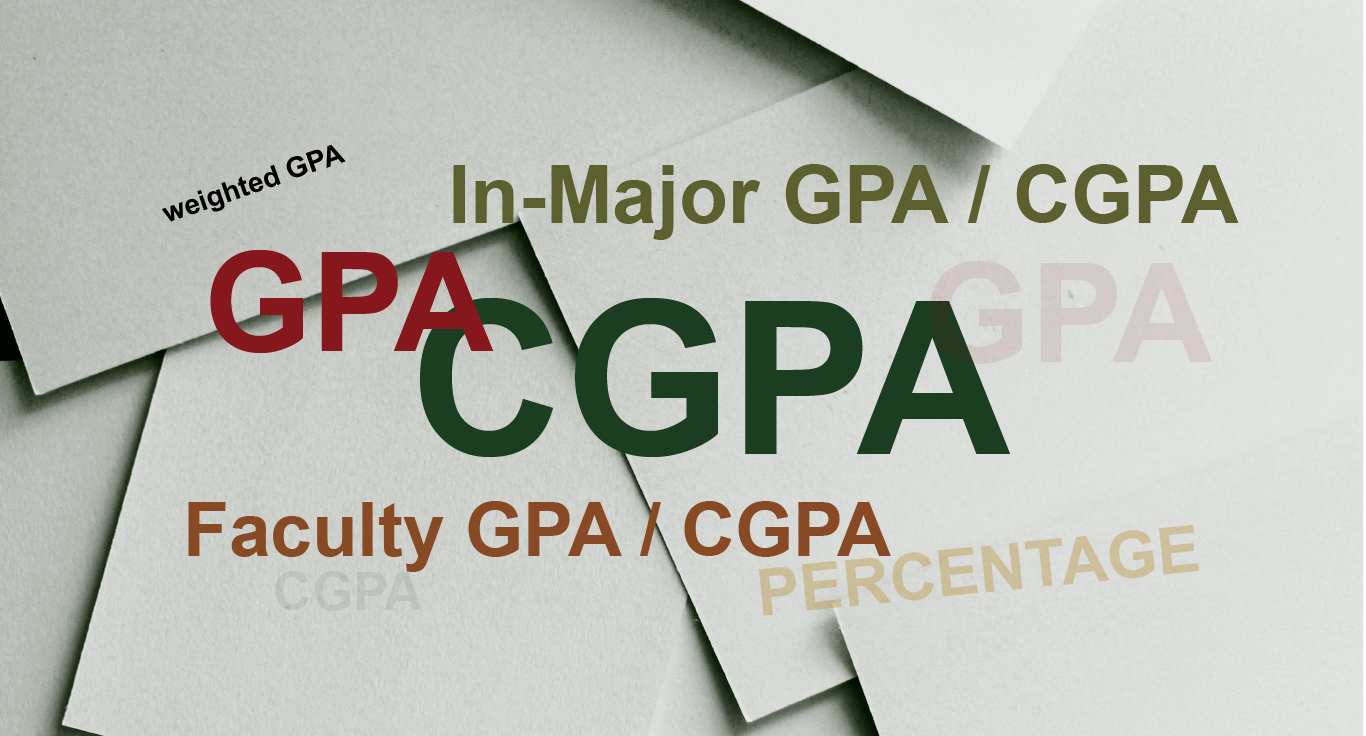Study Guide
Is a 2.8 GPA Good? Colleges That Accept a 2.8 GPA
When evaluating the adequacy of a 2.8 GPA in the field of English, there are various factors to consider. While it may not be considered a particularly high GPA, assessing it within the context of your circumstances and goals is essential.
In English studies, the significance of a GPA can vary depending on your aspirations. Suppose you’re aiming for graduate school or pursuing a career in academia. In that case, a 2.8 GPA might be relatively low compared to the competitive standards that often exist in these domains.
In such cases, it becomes crucial to bolster other aspects of your profile, such as research experience, strong letters of recommendation, and a compelling personal statement, to compensate for any shortcomings in your GPA.
However, suppose your objective is to enter the professional world directly after completing your undergraduate studies. In that case, a 2.8 GPA might still be acceptable, especially if you can demonstrate practical skills and relevant experience in English.
Employers often value real-world capabilities, such as effective communication, critical thinking, and writing proficiency. It can be beneficial to showcase your accomplishments through internships, extracurricular activities, or a portfolio of written work to compensate for any perceived academic limitations.
It’s important to remember that a GPA is just one aspect of your overall academic performance. Admissions committees and employers evaluate applicants holistically, considering factors beyond grades alone.
These factors include your passion for the subject, dedication, growth over time, and ability to articulate your goals and motivations.
What Does a 2.8 GPA Mean?
A 2.8 GPA is a numerical representation of a student’s academic performance in English. It serves as an indicator of their average grades and reflects their overall level of achievement in English-related courses.
However, it is important to note that interpreting the meaning behind a 2.8 GPA requires considering various factors and contextualizing it within the broader educational landscape.
In the realm of English studies, a 2.8 GPA might signify different things depending on the grading scale employed by the educational institution. Generally, a GPA scale ranges from 0.0 to 4.0, with 4.0 being the highest achievable grade point average.
A 2.8 GPA falls below the midpoint of this scale, which could suggest that the student’s performance in English courses has been moderate or slightly below average.
It is worth mentioning that a GPA is influenced by multiple factors, including the difficulty of the coursework, the rigor of the grading criteria, and the individual’s study habits.
English encompasses a broad spectrum of subjects, such as literature, composition, language analysis, and critical thinking. Therefore, a 2.8 GPA in English could reflect variations in performance across these diverse areas.
When assessing the significance of a 2.8 GPA, it is crucial to consider individual circumstances and personal goals. Some students might consider a 2.8 GPA satisfactory, as it indicates consistent effort and a passing grade in English.
Others might view it as an opportunity for improvement and strive to enhance their skills to achieve higher grades.
Read this article to learn about colleges that accept 1.7 GPA: Is a 1.7 GPA Good? Colleges That Accept a 1.7 GPA
Understanding GPA Ratings
GPA, which stands for Grade Point Average, is a rating system to assess a student’s academic performance. It provides a numerical representation of their average grades across various subjects.
Understanding GPA ratings is essential in comprehending a student’s level of achievement and progress in their studies.
In the United States educational system, GPAs are typically calculated on a scale of 0.0 to 4.0, with 4.0 being the highest achievable GPA. Each grade earned in a course is assigned a corresponding grade point value.
These values vary but commonly follow a similar pattern:
A (4.0)
B (3.0)
C (2.0)
D (1.0)
F (0.0).
A GPA of 2.8 falls below the midpoint of this scale, indicating an average academic performance. It suggests that the student’s overall grades are below the highest achievable GPA.
However, it’s important to note that the interpretation of a GPA depends on individual circumstances and the grading scale used by the educational institution. When evaluating a GPA, it’s crucial to consider factors such as the coursework’s difficulty and the school’s grading criteria.
Additionally, different subjects may have varying levels of complexity, which can impact a student’s GPA in specific areas. Therefore, a 2.8 GPA in English, for example, reflects the student’s performance in English-related courses, including literature, composition, and language analysis.
Understanding GPA ratings allows students, educators, and parents to assess academic progress and set goals for improvement. For students with a 2.8 GPA, it signifies an opportunity to reflect on their study habits, seek additional support, and develop strategies to enhance their performance.
See this article to learn about Stonehill College Acceptance Rate: Stonehill College Acceptance Rate | Requirements, SAT/ACT Scores, GPA, & Admissions
Factors That Influence The Perception Of A “Good” GPA
Several factors can influence the perception of a “good” GPA. Here are some key factors that can shape how a GPA is perceived:
Institution and Academic Rigor:
The reputation and academic rigor of the institution can play a role in how a GPA is perceived. For example, a 3.5 GPA from a highly competitive and prestigious university may be viewed more favorably than the same GPA from a less renowned institution.
Field of Study:
The field of study can impact the perception of a GPA. Certain disciplines, such as STEM (science, technology, engineering, and mathematics), are often considered more challenging, and a slightly lower GPA in these fields may be viewed as still commendable. Conversely, some fields may have higher average GPAs, making a lower GPA relatively less competitive.
Comparison to Peers:
How a GPA compares to the GPA distribution of other students at the same institution or within the same major can influence perception. If a student has a higher GPA relative to their peers, it may be regarded more positively.
Grade Inflation or Deflation:
The grading practices of an institution or specific professors can impact the perception of a GPA. A lower GPA may be viewed more critically if a school is known for grade inflation (assigning higher grades easily). Conversely, if a school is known for grade deflation (assigning lower grades), a higher GPA may be considered an impressive achievement.
Future Goals and Aspirations:
The perception of a “good” GPA can also depend on a student’s future goals and aspirations. Certain competitive programs or graduate schools may have higher GPA expectations, while others may prioritize other factors such as research experience, standardized test scores, or extracurricular involvement.
Individual Context and Progression:
Admissions committees and employers often consider the context and progression of a student’s GPA. If a student demonstrates improvement over time or can provide valid explanations for any dips in their academic performance, it may positively influence the perception of their GPA.
Additional Accomplishments and Experiences:
A GPA is just one aspect of an individual’s academic profile. The presence of other notable accomplishments, such as research projects, internships, leadership positions, or community involvement, can help mitigate the impact of a lower GPA and contribute to a more positive perception overall.
Is a 2.8 GPA Good?
Whether a 2.8 GPA is considered good depends on several factors and individual perspectives. Generally, a GPA of 2.8 is slightly below the average GPA of 3.0, often regarded as a benchmark for satisfactory academic performance.
When assessing the “goodness” of a 2.8 GPA, it’s crucial to consider the context in which it is evaluated. Educational institutions, programs, and career paths may have varying expectations and standards for a good GPA.
Some institutions or employers may have higher expectations, while others may place less emphasis on GPA and consider other factors, such as practical experience or personal qualities.
While a 2.8 GPA may not be considered exceptional, it is essential to remember that GPA is not the sole indicator of a person’s abilities, knowledge, or potential for success. It is just one aspect of a broader academic profile.
Other factors, such as extracurricular activities, leadership roles, internships, and personal achievements, can contribute to a well-rounded evaluation.
Moreover, individual goals and aspirations play a significant role in determining the significance of a 2.8 GPA. If a student has set personal goals, achieved consistent improvement, faced challenges, and demonstrated resilience, a 2.8 GPA may still be viewed positively.
Is a 2.8 GPA Good for College Admissions?
When it comes to college admissions, the evaluation of a 2.8 GPA can vary depending on the specific institution and its admission requirements. Generally, a 2.8 GPA is below the average GPA of many colleges and universities, often within the range of 3.0 to 4.0.
However, it’s important to note that GPA is just one of several factors considered during the admissions process.
College admissions committees take a holistic approach when reviewing applications. They consider various aspects, including GPA, standardized test scores (such as the SAT or ACT), extracurricular activities, personal essays, recommendation letters, and other accomplishments.
These factors collectively provide a comprehensive view of an applicant’s abilities, potential, and overall fit for the college or university.
While a 2.8 GPA may be below the average, it does not necessarily disqualify a student from being accepted. Admissions committees often consider the context in which the GPA was earned.
They may consider the rigor of the high school curriculum, the specific challenges a student faces, personal circumstances, and any upward grade trend or improvement over time.
Some institutions have more flexible admission policies or alternative pathways for students who may not meet the traditional GPA requirements. Exploring such options can be beneficial for applicants with a 2.8 GPA.
Is a 2.8 GPA Good for Grad School?
A 2.8 GPA is generally considered below the average GPA of most graduate programs when applying to graduate school. However, it’s important to note that graduate school admissions decisions are based on a holistic evaluation of an applicant’s qualifications, and GPA is just one aspect of the application.
Graduate schools typically consider factors besides GPA, such as standardized test scores (such as the GRE or GMAT), letters of recommendation, statements of purpose, research experience, work experience, and other achievements.
These factors collectively provide a comprehensive picture of an applicant’s capabilities, potential, and fit for the program. While a 2.8 GPA may present a challenge, it does not automatically disqualify an applicant from being accepted into a graduate program.
Admissions committees often consider the context in which the GPA was earned, including the rigor of the undergraduate program, specific challenges or extenuating circumstances, and any upward grade trend or improvement over time.
It can also be advantageous if an applicant can provide a strong justification or explanation for their GPA in their statement or during an interview.
Applicants with a 2.8 GPA can enhance their chances of admission by highlighting other strengths in their application.
This includes showcasing research experience, relevant work experience, strong letters of recommendation, a well-written statement of purpose articulating their research interests and career goals, and any publications or presentations they have made.
Is a 2.8 GPA Good for Middle School?
In the context of middle school, a 2.8 GPA can be considered an average or satisfactory performance. Middle school GPA calculations may vary across different educational institutions, but generally, a 2.8 GPA indicates that a student’s academic performance is moderately in line with expectations.
Middle school is a transitional period where students are exposed to various subjects and begin to develop foundational skills. It’s important to remember that GPA in middle school is often based on a different scale than that used in high school or college.
Some middle schools may use a 4-point scale, while others might use a 5-point or 100-point scale. A 2.8 GPA in middle school suggests that the student’s grades generally range from B- or C+.
While it may not be an exceptional GPA, it is important to recognize that middle school is a time for exploration, growth, and learning. It allows students to develop study habits, time management skills, and a foundation of knowledge that prepares them for higher levels of education.
Rather than solely focusing on the numerical value of a GPA, it is crucial to consider the student’s overall progress, effort, and engagement in their studies.
The middle school encompasses many subjects, including mathematics, language arts, science, social studies, and possibly others. A 2.8 GPA indicates that the student performs adequately across these subject areas.
Is a 2.8 GPA Good for High School?
In high school, a 2.8 GPA is generally considered below average. Most colleges and universities have higher expectations for GPA in their admission requirements.
However, it’s important to note that a GPA is just one aspect of a student’s overall academic profile, and colleges consider other factors during the admissions process.
While a 2.8 GPA may present some challenges, it does not automatically disqualify a student from college acceptance.
Admissions committees evaluate various factors beyond GPA, including standardized test scores (such as the SAT or ACT), extracurricular activities, essays, letters of recommendation, and personal achievements.
These elements provide a more comprehensive picture of a student’s abilities, potential, and suitability for a particular institution.
It’s noteworthy that different colleges and universities have varying admission requirements and selectivity.
Some institutions may have more flexible admission policies or consider other factors in their evaluation, such as personal circumstances, improvement over time, or special talents or achievements.
Students with a 2.8 GPA can still enhance their college prospects by focusing on other aspects of their application.
This includes actively participating in extracurricular activities, pursuing leadership roles, engaging in community service, showcasing special talents or skills, and writing compelling essays highlighting their unique experiences and perspectives.
Demonstrating growth, dedication, and a strong work ethic can positively impact the admissions decision.
Some institutions have more lenient admission criteria or alternative pathways for students who may not meet the traditional GPA requirements.
Exploring these options and seeking guidance from school counselors or college advisors can provide valuable insights and support throughout the college application process.
What Letter Grade is a 2.8 GPA?
In most grading systems, a 2.8 GPA corresponds to a letter grade of B-. However, it’s important to note that grading scales can vary across different educational institutions and systems.
While a B- is a common representation of a 2.8 GPA, it’s advisable to check with the specific grading scale used by your school or institution to confirm the exact letter grade associated with a 2.8 GPA in your particular context.
Converting 2.8 GPA to Percentage: A Comprehensive Guide
Converting a 2.8 GPA to a percentage can be a subjective process, as there is no universally standardized conversion scale. However, I can provide you with a general guide on how to approximate a percentage equivalent to a 2.8 GPA.
- Understand the Grading Scale: First, you need to be familiar with the grading scale used by your educational institution. Different schools may have different grading scales, such as a 4.0 scale or a percentage scale.
- Determine the Highest Possible GPA: Find out the highest possible GPA in your grading scale. For example, if your scale goes up to 4.0, then 4.0 would be the highest achievable GPA. If your scale goes up to 100%, then 100% would be the maximum attainable percentage.
- Calculate the Percentage Range: Divide your GPA by the highest possible GPA and multiply by 100 to calculate the percentage equivalent. For a 2.8 GPA on a 4.0 scale, the calculation would be (2.8 / 4.0) * 100 = 70%. This means that a 2.8 GPA on a 4.0 scale roughly corresponds to a 70% grade.
- Adjust for Different Grading Scales: If your grading scale is different, adjust the calculation accordingly. For example, if your grading scale goes up to 100% and a 4.0 GPA is equivalent to 90%, you would need to determine the equivalent percentage for a 2.8 GPA on that scale based on the given range.
Top 7 Colleges That Accept a 2.8 GPA
Here are seven colleges that may consider applicants with a 2.8 GPA:
1. California State University, East Bay:
California State University, East Bay, has a holistic admissions process and considers various factors in addition to GPA. They may evaluate applicants based on their personal achievements, extracurricular activities, and personal statements.
2. University of Maine:
The University of Maine takes a comprehensive approach to admissions and considers multiple factors beyond GPA. They evaluate applicants based on their high school coursework, standardized test scores, involvement in extracurricular activities, and personal qualities.
3. Texas A&M University-Corpus Christi:
Texas A&M University-Corpus Christi considers applicants with a range of GPAs and takes a holistic approach to the admissions process. They consider factors such as academic achievements, extracurricular involvement, leadership, and personal circumstances.
4. Oregon State University:
Oregon State University reviews applicants holistically and takes into account various aspects such as GPA, strength of curriculum, personal essay, letters of recommendation, and involvement in activities outside of the classroom.
5. University of Nevada, Las Vegas:
The University of Nevada, Las Vegas, employs a holistic admissions process, considering a combination of factors, including GPA, standardized test scores, personal statement, letters of recommendation, and extracurricular involvement.
6. California State University, Chico:
California State University, Chico, evaluates applicants based on multiple factors, including GPA, high school coursework, standardized test scores, extracurricular activities, and community involvement.
7. University of Alabama at Birmingham:
The University of Alabama at Birmingham takes a holistic approach in its admissions process, considering various factors beyond GPA. They assess applicants based on their academic record, standardized test scores, personal essay, extracurricular involvement, and letters of recommendation.
Is a 2.8 GPA Good for Scholarships?
A 2.8 GPA is generally considered below the average GPA requirement for many scholarships. However, it’s important to note that scholarship eligibility criteria can vary widely depending on the specific scholarship program.
Many scholarships place a strong emphasis on academic achievement and require a higher GPA to qualify. However, scholarships also consider other factors such as extracurricular activities, leadership roles, community service, essays, and recommendation letters.
While a 2.8 GPA may not meet the minimum requirement for some scholarships, it doesn’t mean that there aren’t opportunities available.
There are scholarships that consider a range of factors beyond GPA and focus on other aspects of a student’s profile, such as their talents, unique experiences, or specific fields of study. These scholarships may be merit-based, need-based, or cater to specific demographic or interest groups.
It’s important to conduct thorough research and explore scholarship opportunities that align with your specific circumstances, interests, or achievements.
Many scholarships have their own specific eligibility criteria, and some may consider students with a lower GPA if they can demonstrate exceptional qualities or accomplishments in other areas.
Additionally, it’s advisable to consult with your school’s guidance counselor or financial aid office for information about local scholarships or any specialized scholarships that may be available to students in your region or field of study.
Scholarships Based On Extracurricular Involvement And Achievements
Certainly! Here are some scholarships that specifically focus on extracurricular involvement:
#1. The Prudential Spirit of Community Awards:
This scholarship program recognizes high school students who have made significant contributions to their communities through volunteer work and community service.
Learn more about Prudential Spirit of Community Awards.
#2. The Diller Teen Tikkun Olam Awards:
These awards honor Jewish teenagers with remarkable leadership and initiative in creating meaningful social change in their communities.
Learn more about the Diller Teen Tikkun Olam Awards
#3. The Kohl’s Cares Scholarship Program:
Kohl’s offers scholarships to young volunteers who have made a positive impact through their community service activities.
#4. The AXA Achievement Scholarship:
This scholarship program recognizes students who have demonstrated outstanding achievement in their extracurricular activities, such as community service, school clubs, or sports.
Learn more about Axa Achievement Scholarship
#5. The Burger King Scholars Program:
Burger King provides scholarships to high school seniors who have a strong commitment to community service.
Learn more about The Burger King Scholars Program.
#6. The Foot Locker Scholar Athletes Program:
This scholarship program celebrates student-athletes who have excelled in sports while significantly contributing to their communities through volunteer work.
Learn more about Foot Locker Athletes Program
#7. The Jesse Brown Memorial Youth Scholarship Program:
This scholarship is designed for young volunteers who have demonstrated exceptional commitment to serving veterans and their communities.
Learn more about Jesse Brown Memorial Youth Scholarship Program.
Need-based Scholarships And Financial Aid Options
Here are some common need-based scholarships and financial aid options:
#1. Federal Pell Grant:
The U.S. federal government provides this grant to undergraduate students with exceptional financial need. It does not have to be repaid.
Federal Supplemental Educational Opportunity Grant (FSEOG): This grant is available to undergraduate students with exceptional financial need. The school’s financial aid office awards it, and it does not need to be repaid.
#2. State Grants:
Many states offer need-based grants to residents attending in-state colleges and universities. These grants vary in name and eligibility criteria, so it’s important to research the specific programs available in your state.
#3. Institutional Grants and Scholarships:
Colleges and universities often provide their own need-based grants and scholarships to students. These awards can vary in amount and eligibility criteria, so it’s important to review the financial aid information provided by each institution you are interested in.
#4. Work-Study Programs:
Federal Work-Study (FWS) program provides part-time employment opportunities to eligible undergraduate and graduate students. The program allows students to earn money to help pay for their educational expenses.
#5. Need-Based Scholarships:
Many private organizations and foundations offer scholarships specifically based on financial need. These scholarships may have specific eligibility requirements and application processes, so it’s important to research and apply for them.
#6. Free Application for Federal Student Aid (FAFSA):
Filling out the FAFSA is essential in applying for need-based financial aid. It determines your eligibility for federal, state, and institutional aid programs. Submit the FAFSA as early as possible to maximize your aid opportunities.
#7. CSS Profile:
Some colleges and universities require the CSS Profile, an additional financial aid application, to determine eligibility for institutional aid. It provides a more detailed analysis of your financial situation than the FAFSA.
#8. Community and Nonprofit Organizations:
Various community and nonprofit organizations offer need-based scholarships and financial aid to students. Research local organizations in your area or those specific to your field of study or background.
How Does a 2.8 GPA Affect My Career Prospects?
GPA is often considered during the initial screening process; many employers also take into account other aspects of your profile, such as skills, experience, internships, extracurricular activities, and personal qualities.
Here’s how a 2.8 GPA might affect your career prospects:
#1. Job Opportunities:
Some employers, particularly those with highly competitive positions or specialized fields, may have GPA requirements for their entry-level positions.
A 2.8 GPA might make you ineligible for certain opportunities that have higher GPA thresholds. However, many employers prioritize skills, experience, and interview performance alongside academic achievements.
#2. Graduate School Admission:
If you plan to pursue graduate studies, a 2.8 GPA might pose challenges for admission to some programs, particularly those with stringent GPA requirements.
However, there are graduate programs that consider various factors beyond GPA, such as research experience, recommendation letters, statement of purpose, and standardized test scores.
#3. Internships and Co-op Programs:
Some internships and cooperative education (co-op) programs may have GPA requirements. A 2.8 GPA might limit your options for certain competitive programs.
However, internships and co-op programs also consider relevant experience, skills, and interviews, so it’s still possible to secure opportunities with a lower GPA.
#4. Networking and Experience:
Building a strong professional network and gaining relevant experience can significantly offset the impact of a lower GPA.
Networking allows you to connect with professionals in your desired field who can vouch for your skills and potential. Relevant experiences, such as internships, part-time jobs, or volunteering, can showcase your abilities and commitment beyond your GPA.
#5. Skill Development:
Focus on developing and highlighting your skills outside of the classroom. Acquiring practical skills, and certifications and demonstrating your expertise in specific areas can boost your career prospects.
Consider pursuing additional courses, online learning opportunities, or engaging in personal projects to enhance your skill set.
#6. Personal Attributes and Soft Skills:
Employers also value personal attributes and soft skills such as communication, problem-solving, teamwork, leadership, and adaptability.
These qualities can make you stand out and compensate for a lower GPA. Develop these skills through involvement in extracurricular activities, leadership roles, volunteering, or part-time jobs.
FAQs
A 2.8 GPA is a numerical representation of your academic performance. It typically indicates that your average grade falls within the B- range.
A 2.8 GPA is considered average or slightly below average. While it may not be considered exceptional, it is still a respectable achievement.
A 2.8 GPA may impact your college admissions prospects, as many colleges and universities have GPA requirements for admission. However, admissions decisions also consider other factors such as standardized test scores, extracurricular activities, essays, and letters of recommendation.
Admission to graduate school with a 2.8 GPA may be more challenging, as many graduate programs have higher GPA requirements. However, some programs may consider other factors such as research experience, letters of recommendation, and statement of purpose.
A 2.8 GPA may have some impact on your career prospects, as certain employers or industries may have GPA requirements for entry-level positions. However, your career prospects are influenced by various factors such as skills, experience, internships, and networking.
Conclusion
A 2.8 GPA is an average or slightly below-average academic achievement. While it may not be considered outstanding, it is still a respectable accomplishment. It can have an impact on college admissions, graduate school prospects, and certain career opportunities that have GPA requirements.
However, it’s important to remember that a GPA is just one aspect of your academic profile, and other factors such as skills, experience, extracurricular involvement, and personal qualities also play a significant role in shaping your future prospects.
If you have a 2.8 GPA, there are still opportunities available to enhance your academic and professional journey through continuous improvement, focusing on your strengths, and exploring different avenues for growth and development.
Remember to research specific institutions, programs, scholarships, and career paths to understand their requirements and make informed decisions.
Reference
- turito.com:Is a 2.8 GPA Good? List of Colleges that Accept 2.8 GPA
- quora.com:Is a GPA of 2.8 in college bad?
- gradschools.com:Grad Schools that Accept 2.8 GPA and 2.7 GPA
Recommendation






